
The Enchanting Emilia-Romagna Riviera
Discover the perfect blend of sun, history, and gastronomy on the Emilia-Romagna Riviera, where golden sands meet rich cultural heritage and culinary excellence.
The Emilia-Romagna Riviera, located along the Adriatic coast of Italy, is a hidden gem for beach lovers and culture enthusiasts alike. Known for its long stretches of golden sand and clear blue waters, this region offers a perfect blend of relaxation and adventure. From lively beach towns like Rimini and Riccione to the quieter coastal villages, there's something here for every kind of traveler. Beyond its stunning beaches, the Emilia-Romagna Riviera is rich in history and culture. Visitors can explore ancient Roman ruins, medieval castles, and charming old towns. The region is also renowned for its culinary delights. Enjoy fresh seafood, homemade pasta, and the famous balsamic vinegar that hails from this area. Don't miss the chance to sample local wines and cheeses, which are integral to the regional cuisine. Whether you're looking to sunbathe, explore historic sites, or indulge in delicious food, the Emilia-Romagna Riviera promises an unforgettable experience. The warm hospitality of the locals and the region's natural beauty make it an ideal destination for families, couples, and solo travelers alike.
Local tips in Emilia-Romagna Riviera
- Visit during late spring or early autumn to avoid the peak tourist season and enjoy milder weather.
- Try the local seafood dishes at a beachside trattoria for an authentic dining experience.
- Rent a bike to explore the coastal towns and enjoy scenic rides along the Adriatic coast.
- Take a day trip to the nearby city of Ravenna to see its famous Byzantine mosaics.
- Attend one of the many summer festivals, such as La Notte Rosa, for a taste of local culture and entertainment.
The Enchanting Emilia-Romagna Riviera
The Emilia-Romagna Riviera, located along the Adriatic coast of Italy, is a hidden gem for beach lovers and culture enthusiasts alike. Known for its long stretches of golden sand and clear blue waters, this region offers a perfect blend of relaxation and adventure. From lively beach towns like Rimini and Riccione to the quieter coastal villages, there's something here for every kind of traveler. Beyond its stunning beaches, the Emilia-Romagna Riviera is rich in history and culture. Visitors can explore ancient Roman ruins, medieval castles, and charming old towns. The region is also renowned for its culinary delights. Enjoy fresh seafood, homemade pasta, and the famous balsamic vinegar that hails from this area. Don't miss the chance to sample local wines and cheeses, which are integral to the regional cuisine. Whether you're looking to sunbathe, explore historic sites, or indulge in delicious food, the Emilia-Romagna Riviera promises an unforgettable experience. The warm hospitality of the locals and the region's natural beauty make it an ideal destination for families, couples, and solo travelers alike.
When is the best time to go to Emilia-Romagna Riviera?
Iconic landmarks you can’t miss
Piazza Maggiore
Discover the vibrant heart of Bologna at Piazza Maggiore, a stunning plaza surrounded by remarkable architecture and rich cultural experiences.

Museum Ferrari Maranello
Explore the legacy of Ferrari at the Museum Ferrari Maranello, where automotive history and innovation come to life in breathtaking exhibits.

Este Castle
Explore the majestic Este Castle in Ferrara, Italy, a stunning medieval fortress rich in history, art, and architectural beauty.

Arco di Augusto
Discover the Arco di Augusto in Rimini, the oldest Roman arch in Italy, a stunning landmark that embodies the city's rich historical heritage.

Dante's Tomb
Visit Dante's Tomb in Ravenna, a serene historical landmark honoring the legacy of the legendary poet and literary figure, Dante Alighieri.

Rocca Sanvitale
Explore Rocca Sanvitale, a stunning medieval castle in Fontanellato, where history, art, and breathtaking architecture await every traveler.

Rocchetta Mattei
Explore Rocchetta Mattei, a breathtaking castle in Italy, where history, stunning architecture, and picturesque views await every visitor.

Marinando. In barca tra le arcate del ponte
Discover the enchanting Marinando experience at the historic Ponte di Tiberio in Rimini, where history meets the beauty of nature on serene boat rides.

Fortress of San Leo
Discover the breathtaking Fortress of San Leo, a historical gem in Italy, offering stunning views, rich history, and captivating museum exhibits.

Fontana del Nettuno
Explore the enchanting Fontana del Nettuno, a historical landmark in Bologna, showcasing Renaissance artistry and vibrant city life.

Domus del Chirurgo
Explore the Domus del Chirurgo in Rimini, an archaeological gem showcasing ancient Roman mosaics and artifacts, a must-visit for history lovers.

Ayrton Senna monument
Explore the Ayrton Senna Monument in Imola, a stunning tribute to the legendary Formula One driver amidst scenic landscapes and rich motorsport history.

Monumento a Marco Pantani
Discover the Monumento a Marco Pantani in Cesenatico, a heartfelt tribute to Italy's beloved cycling champion amidst stunning coastal scenery.

Piazza Spose Dei Marinai
Explore the artistic heart of Cesenatico at Piazza Spose Dei Marinai, where stunning sculptures and Mediterranean charm come together.

Old Port of Classe - Parco Archeologico di Classe
Explore the Old Port of Classe, an open-air museum in Ravenna, uncovering ancient Roman maritime history amidst beautiful park landscapes.

Unmissable attractions to see
Piazza Maggiore
Explore the stunning architectural beauty and vibrant atmosphere of Bologna's iconic Piazza Maggiore, a must-visit for every traveler.

Este Castle
Discover the rich history and architectural beauty of Este Castle, an iconic fortress in Ferrara, Italy, offering breathtaking views and cultural treasures.

Italia in Miniatura
Discover the beauty of Italy in miniature at Italia in Miniatura, where iconic landmarks come to life in an enchanting amusement park setting.

Lamborghini Automobile Museum
Discover the legacy of Lamborghini at the Automobile Museum in Sant'Agata Bolognese, showcasing stunning vehicles and the art of Italian engineering.

Rocchetta Mattei
Explore the enchanting Rocchetta Mattei, a stunning castle museum in the hills of Grizzana Morandi, rich in history and architectural wonder.

Fontana del Nettuno
Discover the enchanting Fontana del Nettuno, Bologna's iconic Renaissance fountain, a masterpiece of art and history in the heart of the city.

Arco Del Meloncello
Discover the iconic Arco Del Meloncello, a historic archway offering breathtaking views and a glimpse into Bologna's architectural beauty.

Castle of Bardi
Explore the Castle of Bardi, a historical gem offering breathtaking views, rich exhibitions, and a glimpse into Italy's noble past.
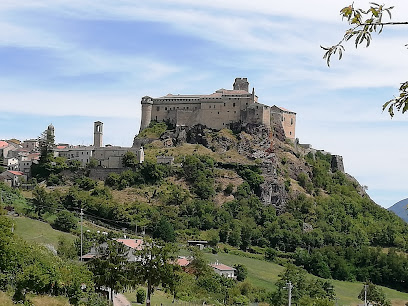
La Ruota Panoramica
Discover breathtaking views of Rimini from La Ruota Panoramica, one of Italy's largest Ferris wheels, perfect for family fun and romantic evenings.

Pinacoteca Nazionale
Explore the Pinacoteca Nazionale in Bologna, home to Renaissance masterpieces and a tranquil atmosphere perfect for art enthusiasts.

Archaeological Museum of Bologna
Explore the Archaeological Museum of Bologna, home to a fascinating collection of artifacts from ancient civilizations, including Egypt and Rome.

Parco Talon
Explore the lush landscapes and tranquil ambiance of Parco Talon, a hidden gem in Casalecchio di Reno perfect for relaxation and recreation.
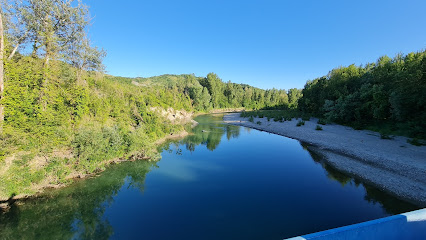
Palazzo Pallavicini
Experience the grandeur of Palazzo Pallavicini in Bologna, a captivating blend of art, history, and stunning architecture.
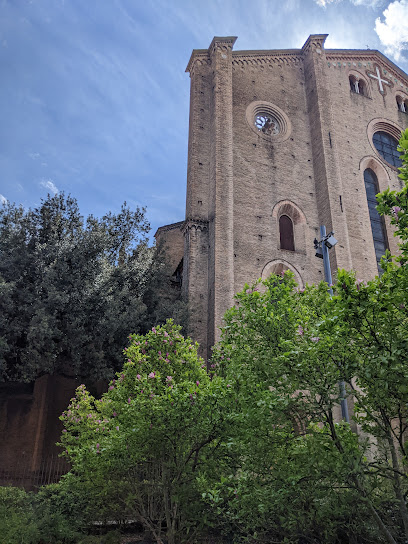
Palazzo Re Enzo
Experience the historical grandeur of Palazzo Re Enzo in Bologna, a captivating landmark showcasing the city's rich medieval heritage.

Villa Spada
Experience the tranquility of Villa Spada, a beautiful park and historical villa in Bologna, blending nature, art, and rich history in one serene location.

Essential places to dine
Restaurant Riviera 69 - Cesenatico
Experience authentic Italian seafood at Restaurant Riviera 69 in Cesenatico - where every dish tells a story from the Adriatic Sea.

La Sangiovesa
Discover authentic Italian flavors at La Sangiovesa in Santarcangelo di Romagna, where tradition meets taste in every delightful dish.

Ristorante Lazaroun
Experience authentic Italian cuisine at Ristorante Lazaroun in Santarcangelo di Romagna - where tradition meets elegance.

Tin Bota Ristorante e pizza
Savor authentic Italian cuisine at Tin Bota Ristorante e Pizza in Rimini - where every dish is a celebration of flavor.

Trattoria Romagnola
Experience authentic Northern Italian cuisine at Trattoria Romagnola in Castel San Pietro Terme – where tradition meets flavor in every dish.

Amerigo
Experience authentic Northern Italian cuisine at Amerigo in Savigno—where tradition meets exquisite taste.

La Grotta
Experience authentic Italian cuisine at La Grotta in Brisighella - where flavor meets tradition amidst stunning landscapes.

Ristorante Casa Artusi
Experience authentic Italian cuisine at Ristorante Casa Artusi in Forlimpopoli, where tradition meets modernity in every delicious dish.

La Vecia Cantena d'la Pre' - Ca' de Sanzves
Discover authentic Italian flavors at La Vecia Cantena d'la Pre', a culinary gem in Predappio Alta offering exquisite cuisine and local wines.

Dallo Zio
Experience exquisite seafood dining at Dallo Zio in Rimini, where tradition meets innovation in Italian cuisine.

La Locanda di Bagnara
Discover La Locanda di Bagnara: A delightful fusion of authentic Italian dining, charming bar vibes, and cozy hotel comforts in the heart of Italy.

GB Restaurant
Discover exquisite Italian and seafood cuisine at GB Restaurant in Torre Pedrera, where culinary excellence meets breathtaking Adriatic views.

San Domenico
Experience culinary excellence at San Domenico in Imola – where tradition meets innovation in fine Italian dining.
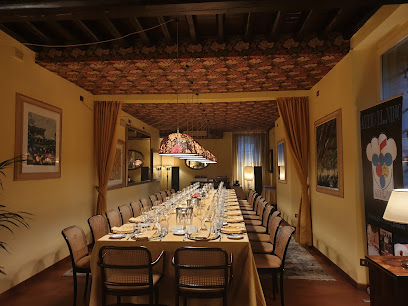
Osteria Del Tempo Perso
Experience authentic Italian cuisine at Osteria Del Tempo Perso in Ravenna—where every dish tells a story.

Quartopiano
Discover the authentic taste of Italy at Quartopiano in Rimini—where exquisite cuisine meets elegant ambiance.

Markets, malls and hidden boutiques
Le Befane Centro Commerciale
Explore Le Befane Centro Commerciale in Rimini, your ultimate shopping destination with diverse stores, dining options, and entertainment.

Romagna Shopping Valley
Explore Romagna Shopping Valley, a vibrant shopping mall in Savignano sul Rubicone, offering diverse stores, dining, and entertainment for an unforgettable experience.

Grandemilia
Discover Grandemilia in Modena, your ultimate shopping destination featuring diverse stores, delightful dining, and community events for a memorable experience.
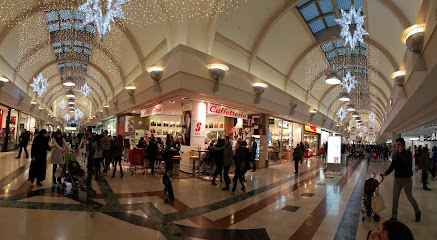
Fidenza Village
Explore Fidenza Village, a premier outlet mall in Italy, blending luxury shopping with Italian charm and exceptional dining experiences.
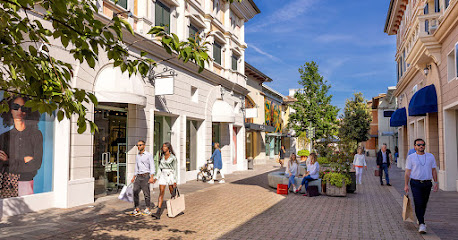
Castel Guelfo The Style Outlets
Discover amazing deals and a unique shopping experience at Castel Guelfo The Style Outlets, the top destination for fashion lovers in Italy.

Shopville Gran Reno
Discover the vibrant shopping experience at Shopville Gran Reno, Bologna's premier shopping mall with over 150 stores and diverse dining options.

Il Castello Centro Commerciale
Discover a diverse shopping experience at Il Castello Centro Commerciale, Ferrara's go-to destination for retail, dining, and family fun.

I Petali
Explore I Petali, Reggio Emilia's vibrant shopping mall, offering diverse retail, dining, and entertainment options for an unforgettable experience.

Centro Commerciale Esp
Discover the ultimate shopping experience at Centro Commerciale Esp in Ravenna, featuring diverse shops, dining options, and family-friendly amenities.

Centro Commerciale La Rotonda
Experience the best shopping, dining, and entertainment at Centro Commerciale La Rotonda in Modena, Italy - a must-visit for every traveler.

Centro Meridiana
Discover the ultimate shopping experience at Centro Meridiana, Bologna's favorite shopping mall with diverse stores and delightful dining options.
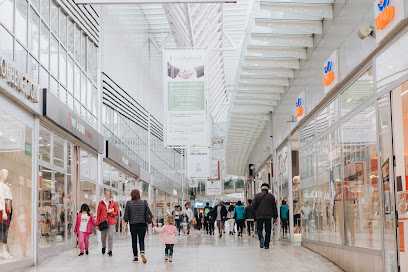
Centro Montefiore
Explore Centro Montefiore, Cesena’s vibrant shopping mall offering a diverse range of shops, dining, and entertainment options for all ages.

Gelateria ADLER Riccione
Indulge in artisanal gelato and delightful desserts at Gelateria ADLER, the sweet heart of Riccione's vibrant coastline.

Outlet
Shop the latest fashion trends at the Calzedonia Outlet in Granarolo dell'Emilia, where style meets affordability for every traveler.

San Marino Outlet Experience
Shop designer brands at unbeatable prices at the San Marino Outlet Experience, where fashion meets affordability in a stunning setting.

Essential bars & hidden hideouts
Darsena Sunset Bar
Experience the perfect blend of stunning sunsets, delectable small plates, and a vibrant atmosphere at Darsena Sunset Bar in Rimini.

Primo Miglio di Conti Mirco
Discover the vibrant atmosphere of Primo Miglio di Conti Mirco, a must-visit bar in Rimini, offering delicious cocktails, coffee, and light meals in a cozy setting.

Bar Charlie Brown
Experience the vibrant flavors of Italy at Bar Charlie Brown in Rimini, where small plates and exquisite cocktails meet warm hospitality.

Bar Capogiro
Discover the vibrant cocktail culture of Rimini at Bar Capogiro, where innovative drinks and a lively atmosphere await you.

Hobo's
Experience Rimini's nightlife at Hobo's, where exquisite cocktails and live music create an unforgettable atmosphere.
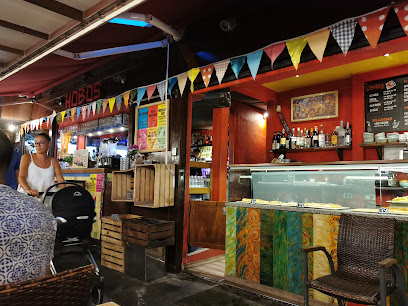
Buonaventura Baretto on Lamone
Experience the charm of Buonaventura Baretto in Casalborsetti, where seaside views meet delightful drinks and a welcoming atmosphere.

Vanquish
Experience the vibrant nightlife and exquisite cocktails at Vanquish, Milano Marittima's premier cocktail bar and nightclub destination.

Acquadolce
Discover Acquadolce, a serene lounge in Cesena offering stunning views, delicious drinks, and a cozy atmosphere for every traveler.

Sand Gate
Discover the vibrant atmosphere and delightful drinks at Sand Gate, a must-visit bar in Cesenatico's stunning coastal setting.

Amsterdam Pub
Discover the vibrant Amsterdam Pub in Marina di Ravenna, where American classics and lively atmosphere meet for an unforgettable dining experience.

The Corner Pub
Experience the lively atmosphere and delicious cuisine at The Corner Pub, a premier gastropub in Bellaria-Igea Marina, perfect for food lovers and beer enthusiasts.

Tiburon
Discover the vibrant nightlife of Rimini at Tiburon, a cocktail bar that promises exquisite drinks and a lively atmosphere.
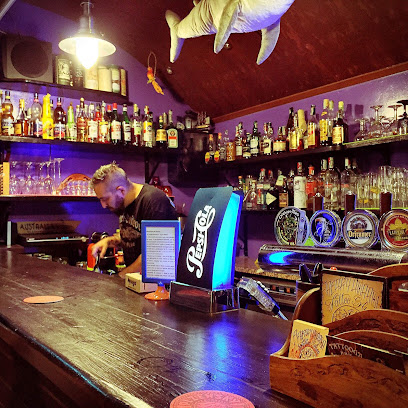
Turquoise Beach Club
Discover the lively vibe of Turquoise Beach Club, where exquisite dining meets beachside entertainment in the heart of Rimini.

Drink Store
Experience the vibrant nightlife at the Drink Store in Cervia, where delicious drinks and fast food create the perfect atmosphere for fun and relaxation.

Moog
Experience the vibrant nightlife of Ravenna at Moog, a lively pub offering great drinks and live music that captures the essence of local culture.

Local Phrases about Emilia-Romagna Riviera
-
- HelloCiao
[chow] - GoodbyeArrivederci
[ah-ree-veh-DEHR-chee] - YesSì
[see] - NoNo
[noh] - Please/You're welcomePer favore
[pair fah-VOH-reh] - Thank youGrazie
[GRAH-tsyeh] - Excuse me/SorryScusa
[SKOO-zah] - How are you?Come stai?
[KOH-meh stai] - Fine. And you?Bene. E tu?
[BEH-neh. eh too] - Do you speak English?Parli inglese?
[PAHR-lee een-GLEH-zeh] - I don't understandNon capisco
[nohn kah-PEES-koh]
- HelloCiao
-
- I'd like to see the menu, pleaseVorrei vedere il menu, per favore
[vohr-RAY veh-DEH-reh eel MEH-noo, pair fah-VOH-reh] - I don't eat meatNon mangio carne
[nohn MAN-joh KAR-neh] - Cheers!Salute!
[sah-LOO-teh] - I would like to pay, pleaseVorrei pagare, per favore
[vohr-RAY pah-GAH-reh, pair fah-VOH-reh]
- I'd like to see the menu, pleaseVorrei vedere il menu, per favore
-
- Help!Aiuto!
[ah-YOO-toh] - Go away!Vattene!
[vah-TEH-neh] - Call the Police!Chiama la polizia!
[KYAH-mah lah poh-LEE-tsyah] - Call a doctor!Chiama un medico!
[KYAH-mah oon meh-DEE-koh] - I'm lostMi sono perso
[mee SOH-noh PEHR-soh] - I'm illSto male
[stoh MAH-leh]
- Help!Aiuto!
-
- I'd like to buy...Vorrei comprare...
[vohr-RAY kohm-PRAH-reh] - I'm just lookingSto solo guardando
[stoh SOH-loh gwar-DAHN-doh] - How much is it?Quanto costa?
[KWAHN-toh KOH-stah] - That's too expensiveÈ troppo caro
[eh TROHP-poh KAH-roh] - Can you lower the price?Puoi abbassare il prezzo?
[PWEE ahb-bahs-SAH-reh eel PREH-tsoh]
- I'd like to buy...Vorrei comprare...
-
- What time is it?Che ora è?
[keh OH-rah eh] - It's one o'clockÈ l'una
[eh LOO-nah] - Half past (10)Sono le dieci e mezza
[SOH-noh leh dyeh-CHEE eh MEHT-sah] - MorningMattina
[maht-TEE-nah] - AfternoonPomeriggio
[poh-meh-REE-joh] - EveningSera
[SEH-rah] - YesterdayIeri
[YEH-ree] - TodayOggi
[OH-jee] - TomorrowDomani
[doh-MAH-nee] - 1Uno
[OO-noh] - 2Due
[DOO-eh] - 3Tre
[TREH] - 4Quattro
[KWAH-troh] - 5Cinque
[CHEEN-kweh] - 6Sei
[say] - 7Sette
[SEH-teh] - 8Otto
[OH-toh] - 9Nove
[NOH-veh] - 10Dieci
[DYEH-chee]
- What time is it?Che ora è?
-
- Where's a/the...?Dov'è...?
[doh-VEH] - What's the address?Qual è l'indirizzo?
[kwahl eh leen-DEER-eet-tsaw] - Can you show me (on the map)?Puoi mostrarmi (nella mappa)?
[PWEE mohs-TAHR-mee (NEH-lah MAH-pah)] - When's the next (bus)?Quando è il prossimo (autobus)?
[KWAHN-doh eh eel PROHS-shee-moh (ow-TOH-boos)] - A ticket (to ....)Un biglietto (per ....)
[oon bee-LYET-toh (pair)]
- Where's a/the...?Dov'è...?
History of Emilia-Romagna Riviera
-
The Emilia-Romagna Riviera's history dates back to ancient Roman times when the region was known as 'Aemilia'. The Via Aemilia, a major Roman road constructed in 187 BCE, connected this area to the rest of Italy, boosting trade and the movement of people. Roman ruins and artifacts can still be found in cities like Rimini, where the Arch of Augustus and the Tiberius Bridge stand as testaments to the grandeur of Roman engineering.
-
During the medieval period, the Emilia-Romagna Riviera was influenced by the powerful Maritime Republics of Italy, particularly Venice and Genoa. The coastal towns, including Ravenna, rose to prominence due to their strategic locations and flourishing maritime trade. Ravenna, once the capital of the Western Roman Empire, became an important cultural and political center in this era.
-
The Renaissance period saw the Emilia-Romagna Riviera transform into a hub of art and culture. Cities like Ferrara and Bologna attracted renowned artists, scholars, and architects. Este family in Ferrara commissioned works from the likes of Piero della Francesca and Titian. The region's coastal towns benefitted from this cultural flourishing, with splendid architecture and artistic heritage still visible today.
-
In the late 18th and early 19th centuries, the Emilia-Romagna Riviera was significantly impacted by Napoleon Bonaparte's campaigns. The region became part of the Cisalpine Republic and later the Italian Republic under French control. This period brought administrative changes and modernization, influencing the development of the towns along the Riviera.
-
The mid-19th century was a tumultuous time as the Emilia-Romagna Riviera played a role in the Risorgimento, the movement for Italian unification. Figures like Giuseppe Garibaldi passed through these lands, rallying support for a unified Italy. This period saw the region gradually integrated into the newly formed Kingdom of Italy by 1861, marking a significant shift in its political landscape.
-
The Emilia-Romagna Riviera, like much of Italy, suffered during World War II. The region was a battleground during the Gothic Line campaign in 1944-45, leading to significant destruction. Post-war reconstruction efforts in the 1950s and 60s revitalized the area, transforming it into a popular tourist destination. The resilience and spirit of the local communities played a crucial role in this recovery.
-
From the 1960s onwards, the Emilia-Romagna Riviera experienced a tourism boom. The picturesque beaches, vibrant nightlife, and rich cultural heritage attracted visitors from all over the world. Cities like Rimini and Riccione became synonymous with summer holidays, with their modern amenities and historic charm offering a unique blend for tourists. This period marked the Riviera's establishment as a premier holiday destination in Italy.
Emilia-Romagna Riviera Essentials
-
The Emilia-Romagna Riviera is accessible via several major transportation hubs. The nearest international airports are Bologna Guglielmo Marconi Airport (BLQ) and Federico Fellini International Airport (RMI) in Rimini. From these airports, you can take a train, bus, or taxi to reach coastal towns like Rimini, Ravenna, and Cattolica. High-speed trains (Frecciarossa and Italo) connect Bologna to other major Italian cities, making it convenient for international travelers. Additionally, many European cities offer direct flights to these airports.
-
The Emilia-Romagna Riviera is well-connected by an efficient public transportation system. Trains are a popular choice for travel between coastal towns, with frequent services provided by Trenitalia. Local buses run by agencies like Start Romagna offer convenient routes within towns and to nearby attractions. Taxis and ride-sharing services like Uber are available but can be more expensive. Renting a car is a good option if you plan to explore the countryside or visit multiple towns at your own pace. Biking is also popular, especially in the flat coastal areas.
-
The official currency in Italy is the Euro (EUR). Credit and debit cards are widely accepted in hotels, restaurants, and shops. However, it is advisable to carry some cash, especially when visiting smaller establishments or local markets. ATMs are plentiful in most towns, and major banks offer currency exchange services. Keep in mind that some smaller shops and cafes might have a minimum amount for card transactions.
-
The Emilia-Romagna Riviera is generally safe for tourists. However, as with any tourist destination, it is important to take standard precautions. Petty crimes like pickpocketing can occur, especially in crowded areas such as train stations and popular tourist spots. Rimini, in particular, has areas where tourists should be cautious at night, especially near the train station and some beachfront areas. Always keep an eye on your belongings and avoid poorly lit areas after dark.
-
In case of an emergency, dial 112, the European emergency number, for immediate assistance. Emergency services include police, fire brigade, and medical help. Major towns have hospitals and clinics, and pharmacies are widely available for minor health issues. It is advisable to have travel insurance that covers medical emergencies. Some hospitals have English-speaking staff, but it is useful to know basic Italian phrases or have a translation app handy.
-
Fashion: Do dress stylishly and neatly, as Italians take pride in their appearance. Avoid overly casual or revealing attire, especially in religious sites. Religion: Do respect local customs and traditions. When visiting churches, cover your shoulders and knees. Public Transport: Do validate your ticket before boarding trains and buses. Don't speak loudly or disturb others. Greetings: Do greet people with a 'Buongiorno' (Good morning) or 'Buonasera' (Good evening). A handshake is common among acquaintances. Eating & Drinking: Do try local specialties and wines. Don't rush through meals; dining is a leisurely activity in Italy.
-
To experience Emilia-Romagna Riviera like a local, visit the traditional food markets where you can find fresh produce, cheeses, and cured meats. Explore the lesser-known towns like Cesenatico for its charming canals and historic port. Attend local festivals and events, such as the 'Notte Rosa' (Pink Night) in Rimini, which features music, performances, and fireworks. Engage with locals and try to learn a few Italian phrases; they appreciate the effort and it can enhance your travel experience. Don’t miss out on trying the region’s famed dishes like piadina, tagliatelle al ragù, and seafood specialties.
Trending Landmarks in Emilia-Romagna Riviera
-
Piazza Maggiore
-
Museum Ferrari Maranello
-
Este Castle
-
Arco di Augusto
-
Dante's Tomb
-
Rocca Sanvitale
-
Rocchetta Mattei
-
Marinando. In barca tra le arcate del ponte
-
Fortress of San Leo
-
Fontana del Nettuno
-
Domus del Chirurgo
-
Ayrton Senna monument
-
Monumento a Marco Pantani
-
Piazza Spose Dei Marinai
-
Old Port of Classe - Parco Archeologico di Classe
Nearby Cities to Emilia-Romagna Riviera
-
Things To Do in Parma
-
Things To Do in Bologna
-
Things To Do in Lucca
-
Things To Do in Cinque Terre
-
Things To Do in Pisa
-
Things To Do in Florence
-
Things To Do in Verona
-
Things To Do in San Gimignano
-
Things To Do in Ravenna
-
Things To Do in Genoa
-
Things To Do in Siena
-
Things To Do in Bergamo
-
Things To Do in Milan
-
Things To Do in Arezzo
-
Things To Do in Acquaviva













